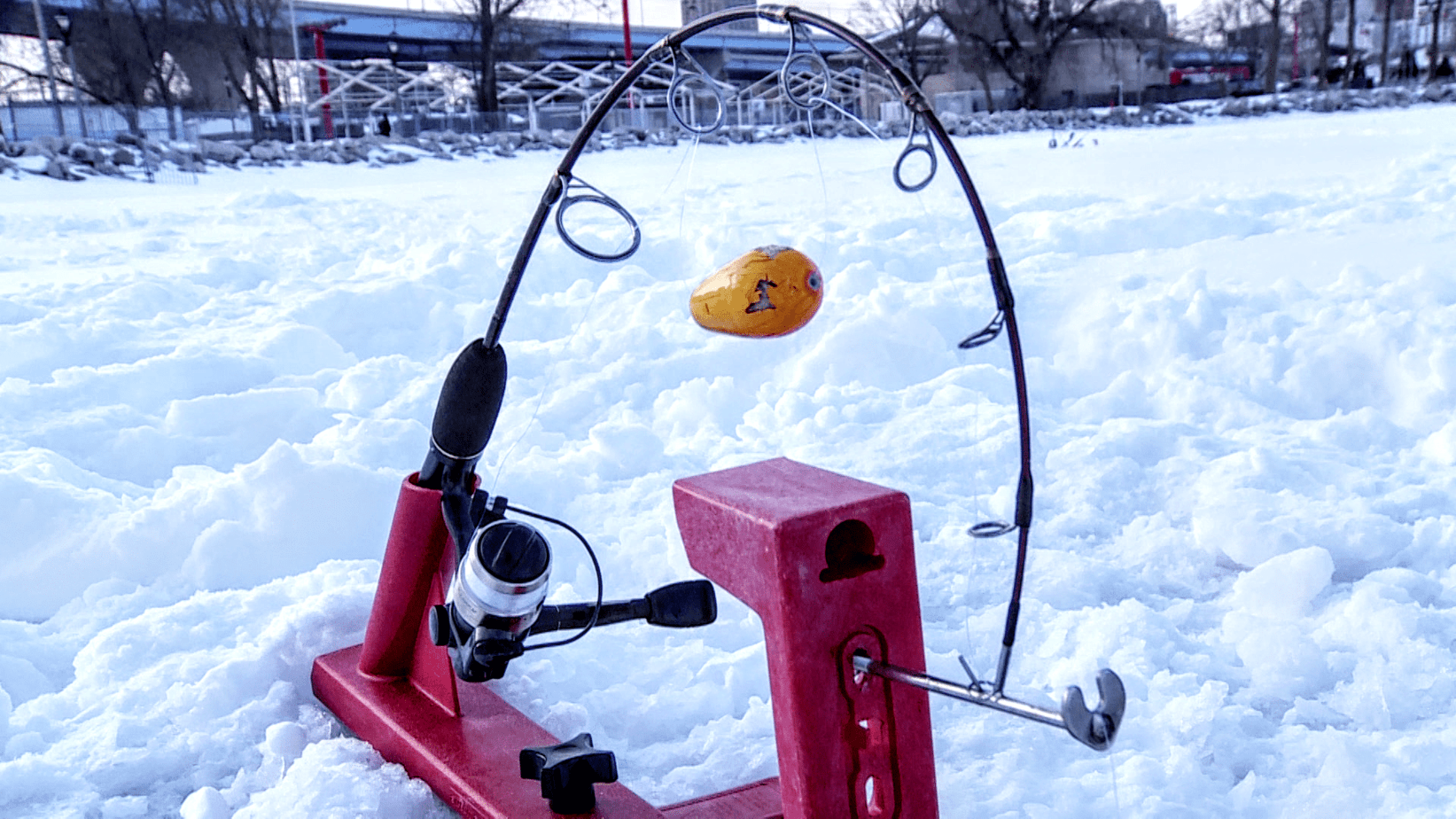Doug Wegner and Jason Drewa discuss the ins and outs of using automatic hook-setting devices (ie. Jaw Jackers or Automatic Fisherman).
In this article, we will be discussing automatic hooksetting devices, specifically focusing on their use for trout fishing. These devices are not legal in all states, so it’s important to check the regulations in your area before using them. However, in Wisconsin, where we are located, they are legal and can be a great tool for fishing trout.
How Automatic Hooksetting Devices Work
Automatic hooksetting devices are designed to set the hook automatically when a fish takes the bait. They are particularly useful for trout fishing because trout can be finicky and easily spooked. If they feel any tension or detect a hook, they will often drop the bait and swim away. With an automatic hooksetting device, you can set the hook quickly and efficiently, increasing your chances of landing the fish.
Setting Up the Automatic Hooksetting Device
To set up the automatic hooksetting device, you will need a sensitive and light rod. This allows for a minimal amount of line to be taken before the rod goes off and sets the hook. You can adjust the sensitivity of the device using a bobber. By leaving a small amount of space between the bobber and the rod, you can control how much line the fish can take before the hook is set.
It’s important to note that the size of the minnow you use will also affect how you set up the device. With larger minnows, you may need to give them a little more slack so they can grab the bait and turn it in their mouth before swimming away. This ensures that the hook is securely in place when the fish starts to run.
Advantages of Automatic Hooksetting Devices
One of the main advantages of using an automatic hooksetting device is the quick hook set. Once the fish takes the bait, the hook is immediately set, increasing your chances of successfully landing the fish. This is different from other methods, such as tip-ups or dead sticks, where you have to manually set the hook.
Another advantage is that the fish is hooked on a rod and reel, allowing for a more controlled fight. This not only makes the fishing experience more enjoyable but also reduces the risk of the fish swallowing the hook. By quickly hooking the fish, you can minimize any potential harm to the fish and increase the chances of releasing it back into the water unharmed.
Choosing the Right Rod for Automatic Hooksetting Devices
When selecting a rod for automatic hooksetting devices, it is recommended to use a glass rod rather than a graphite rod. Glass rods have more flexibility and can better withstand the abuse of being in the automatic hooksetting device. Additionally, glass rods are better equipped to handle the head shakes of larger fish, ensuring a better chance of landing them.
Popular Automatic Hooksetting Devices
There are several popular automatic hooksetting devices available on the market. One of the most well-known is the Automatic Fisherman. This device requires a specific rod, preferably a shorter one without an insert, as the rod tip is attached directly to a pin. Another popular option is the Jaw Jacker, which allows for the use of longer rods and uses a zip tie instead of directly attaching the rod tip. Both devices are effective and it ultimately comes down to personal preference and the type of equipment you prefer to use.
Importance of Proper Drag Settings
When using an automatic hooksetting device, it’s crucial to set the drag correctly. Since the device will automatically set the hook and the fish will be fighting the rod on its own, the drag needs to be adjusted to slip when the fish is running. This allows the fish to take some line while still maintaining enough pressure to keep the hook securely in place. Proper drag settings ensure that the fish doesn’t have the opportunity to shake off the hook while still allowing you to reel in the fish effectively.
Versatility of Automatic Hooksetting Devices
While automatic hooksetting devices are commonly used for trout fishing, they can also be used for other species such as panfish and walleye. However, it’s important to note that these devices may not be suitable for larger baits used for pike or lake trout. In these cases, it may be better to use a standard tip-up or set line to give the fish more time to turn the bait in their mouth before setting the hook.
New Technologies and Attachments
There are newer technologies and attachments available for automatic hooksetting devices that can enhance your fishing experience. Some devices have flag attachments that indicate when you have a strike, allowing you to monitor your lines from a distance. These attachments can be particularly useful when fishing in larger bodies of water or when you have multiple lines set up.










